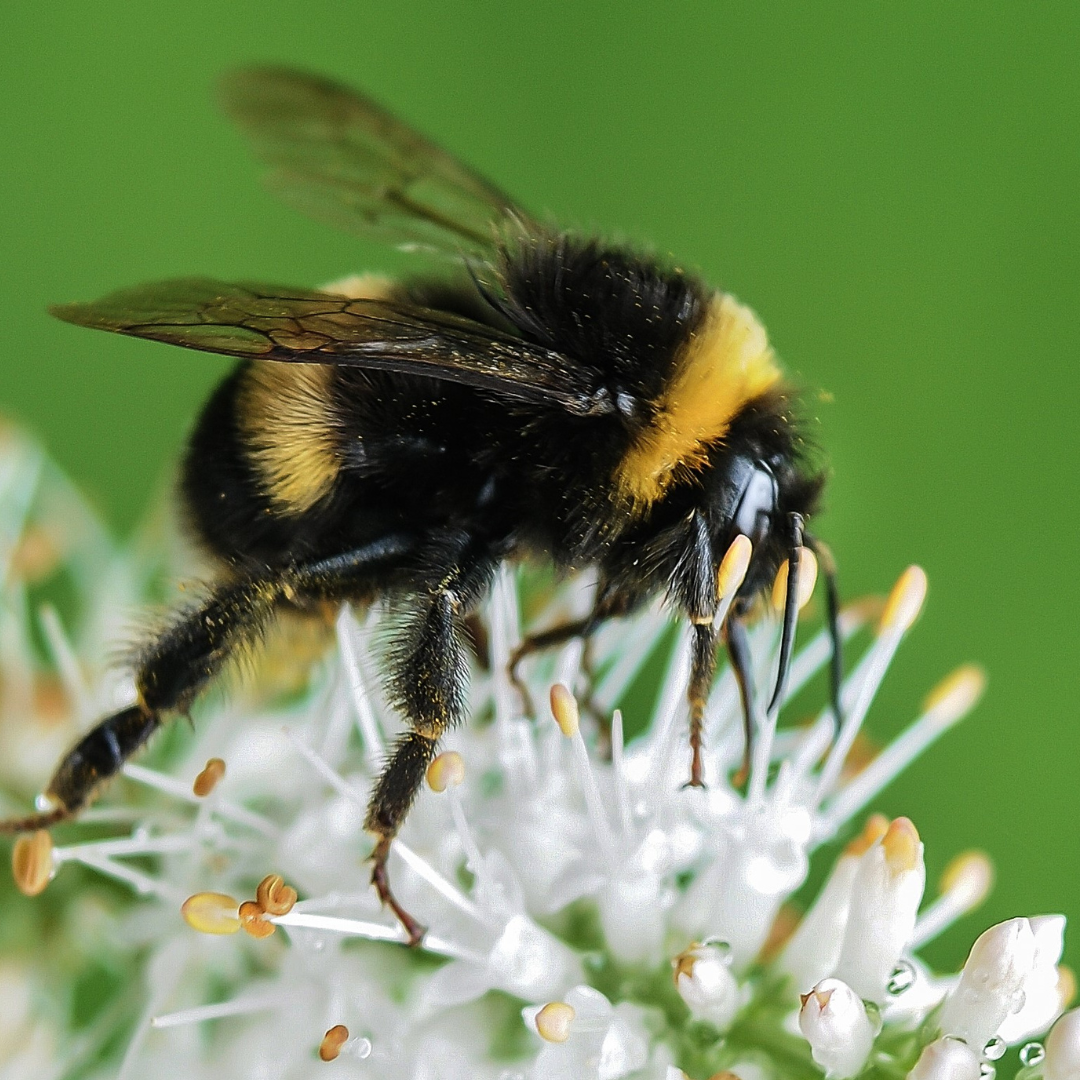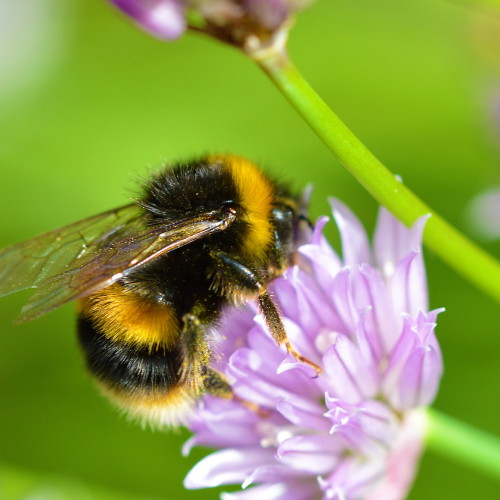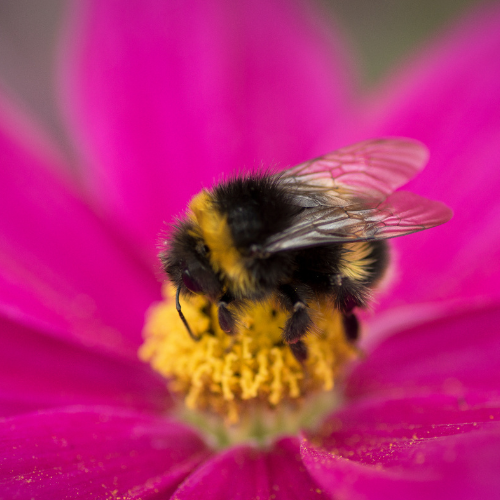Bumble Bees
Introduction to
Bumble bees are important pollinators known for their large, fuzzy bodies and gentle nature. While they are generally beneficial, their nests near human habitation can sometimes pose a problem. This guide provides detailed information on how to recognize, understand, and manage bumble bees, including preventive measures and professional pest control solutions.
Recognition
Bumble bees (genus Bombus) are large, robust insects with a characteristic fuzzy appearance. They typically measure between 1/2 to 1 inch in length and are black and yellow, though some species may have orange or red markings. Bumble bees have a distinctive buzzing sound and are often seen hovering near flowers. Unlike honey bees, bumble bees have a more rounded abdomen and are covered in dense hair, which helps them collect pollen. Their wings are translucent and their legs are equipped with pollen baskets, which are often seen filled with bright yellow or orange pollen.
Biology
Bumble bees belong to the family Apidae and have a lifecycle that includes egg, larva, pupa, and adult stages. They form small colonies, usually consisting of 50 to 500 individuals. A single queen starts the colony in the spring by laying eggs that develop into worker bees. These workers then take over foraging and nest maintenance duties, allowing the queen to focus on laying eggs. In late summer, the colony produces new queens and males. After mating, the new queens hibernate through the winter, while the rest of the colony dies off. Bumble bees are important pollinators, playing a crucial role in the pollination of many plants and crops.
Habits
Bumble bees are social insects that live in colonies. They prefer to nest in ground cavities, such as abandoned rodent burrows, or above ground in thick grass, compost heaps, or tree hollows. They are most active during the warmer months, foraging for nectar and pollen from flowers. Bumble bees are generally non-aggressive and will only sting if they feel threatened or if their nest is disturbed. Unlike honey bees, bumble bees can sting multiple times because their stingers are not barbed. Their foraging behavior makes them important pollinators, and they are often seen in gardens, meadows, and agricultural fields.
Prevention
Preventing bumble bee nests near your home involves a few key strategies. Regularly inspect your property for potential nesting sites, such as abandoned rodent burrows, thick grass, or compost piles, and take steps to remove or secure these areas. Seal any gaps or cracks in your home’s exterior to prevent bees from nesting in wall cavities or attics. When gardening, be mindful of the presence of bumble bees and try to coexist with them, as they are beneficial pollinators. If a nest is found in a problematic location, it is best to contact a professional pest control service to handle the situation safely and humanely.
Professional
When bumble bees nest in or around your home becomes a concern, professional pest control services can offer effective and humane solutions. STL Pest Control provides comprehensive inspections and tailored treatment plans to address bumble bee infestations. Their methods include identifying and safely relocating bumble bee nests, as well as implementing preventive measures to deter future nesting. Professional services ensure that the infestation is managed efficiently and safely, minimizing the risk to humans and pets while preserving the important ecological role of bumble bees.



Our Office









